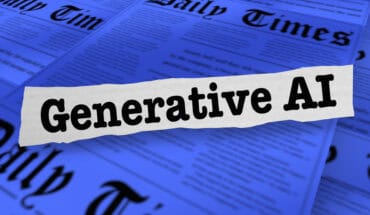
With AI-powered optimization, service delivery organizations can benefit from the combination of data analysis at scale and in real-time, and the ability to consume information in an easy to digest format.
Excellent service delivery is not just for global corporations such as Amazon, but it is now a key business differentiator for every industry, including asset-intensive industries. Over half of the customers in a recent PwC report cited that they would stop purchasing from a company that had several bad experiences. Whether it’s day-to-day planning, scheduling, or routing, no industry is immune, or they risk falling behind in the service delivery race. These issues are bringing a new focus to using Planning and Scheduling Optimization (PSO) solutions, backed by AI and ML capabilities, to transform service delivery in asset-intensive industries.
Demanding customers are only on the incline. From quick resolution, rapid responses, flexible booking processes, and first-time fixes, today’s service organizations are under pressure to deliver on rising expectations amid an ongoing skills shortage that impacts workers company-wide. Employees are often overstretched, and dispatchers are overburdened as they navigate new scenarios on a reduced workforce.
Perfecting service delivery has come down to a balancing act—optimizing the need for customer experiences with employee experiences SLAs without impacting the bottom-line costs. Where assets are involved, service optimization only becomes more complex. Service delivery, parts, and logistics often require more complicated planning and scheduling. It is no easy feat, but it is one that can be made easier with the right technology and an AI-enhanced PSO solution.
See also: Improved Service Delivery Drives AIOps Use in Government
Right person, right time – always
The intensity and complexity of a service dispatcher’s work means decisions with different contexts need to be made quickly in order to maximize efficiency. The primary reason why optimization in the moment matters comes down to the impact of delays on customer experience—such as when customers cancel, appointments run over, and parts need to be allocated. Businesses need a system that can react in minutes, not hours. This is where the importance of AI-powered optimization demonstrates its value, as an effective system can do in fifteen minutes what some systems need overnight to compute.
An AI-enabled PSO system can schedule large amounts of jobs in real-time to ensure the right engineer or field worker is in the right place at the right time and with the right skills and parts to successfully complete any job. AI PSO technology has the capability to continuously analyze real-time events, taking into account everything from job location to duration, technician availability, skills, parts, tools, and other dependent tasks to automatically deliver highly optimized plans in seconds. AI can go one step further to enhance the dispatcher experience by giving them information they can understand, particularly when something goes wrong.
The dynamic route optimization function of PSO technology assigns jobs to technicians that will optimize drive time by taking the most efficient route and assign jobs that are as close together as resource availability will allow. The system achieves this by using AI to calculate the time needed to complete each task based on existing data for each technician so that an appropriate timeframe is given to jobs that are more complex or have a larger scale. This guarantees that there is enough time for completion and prevents costly overruns.
Don’t forget about the back end – employees are gold!
Prioritizing jobs is difficult when multiple tasks are coming in continuously and encompass a wide range of different geographical regions. Service dispatchers are forced to firefight, which can be highly stressful and likely to negatively impact employee retention. Added to this, field workers may become disillusioned, having to deal with significant travel requirements, short notice changes to job requirements, and problems in completing allocated work. Morale across the entire field workforce is likely to suffer as a result—but asset-intensive businesses can turn the tide with AI.
The right AI-powered scheduling tool can tailor the chosen approach to meet the precise needs of each business. There will typically be a need to efficiently blend appointments with reactive and planned work, so businesses will need an effective way of aligning appointment times around existing committed work. But that is not sufficient in itself. Organizations need to go beyond this to deliver target-based or value-based scheduling. This approach allows organizations to focus their scheduling directly on the key performance indicators (KPIs) that matter most to the business.
An AI-powered PSO system, for instance, allows organizations to layer-specific values, such as company rules (KPIs) or regional rules (regulatory), over the engine powering its planning optimization to ensure that appointments are triaged effectively. This could be a reduction in the average cost per job for a white goods repair firm or an increase in the percentage of calls responded to within the target SLA (time window) by a regional ambulance service. Typically, it is a question of managing complex and even competing priorities to ensure SLA compliance and maximize profit.
Two-fold benefits: Reducing time and error
Service dispatchers often have to manage planned maintenance with new jobs coming on stream in real-time. To complicate matters further, many try to optimize the workforce using traditional processes, which are time-consuming and error-prone. So where can businesses cut down on inefficient and time-killer tasks?
Today’s enterprises continuously collect asset performance data, but industries from manufacturing to service all struggle with similar dilemmas: how to put data collected in the right context and take action in real time. Autonomous enterprises that incorporate AI and ML into their processes can manage data at scale more quickly and accurately than a solely human workforce. Equally, AI and ML models with self-learning asset performance anomaly detection can deliver the predictive analytics capabilities needed to help businesses evaluate how they are likely to be impacted by a wide range of likely scenarios in order to pinpoint the best action to take in any given situation.
“What-if” scenario forecasting capabilities available in advanced AI PSO systems can run a variety of models for businesses to prepare for any eventuality. Here’s an example—what if a business expects a 50% spike in appointments? Scenario planning software can run a variety of models to ensure that the business is staffed up or help connect the business to the tools to leverage contingent labor.
The human element will remain key
The greater precision delivered by AI-driven workforce scheduling enables service managers to plan for the future more accurately. It can also make field workers more productive, reduce their travel requirements, and allow them to complete more jobs without as much hassle—factors that all contribute towards a happier workforce.
But it’s important for businesses not to go too far down the AI well. Yes, AI has the potential to bring new efficiencies and unlock business value across asset-intensive industries, but AI must always play a supporting role rather than dictating the final decision. AI can provide businesses with the right intelligence at the right time, but it is in the ability to support the delivery of enhanced customer service that the most far-reaching benefits of AI-driven workforce scheduling lie. For instance, the information collected by an AI PSO system must be shared in the right form with the dispatcher so that they can consume it quickly and easily and then use it, alongside their own experience and expertise, to make the final decision.
The secret to sustained CX success: service optimization
Of course, enhancing customer experiences needs to be top of the agenda for every service-based businesses—but it should not be at the employee or bottom-line expense. With AI-powered optimization, organizations can benefit from the combination of data analysis at scale and in real-time and the ability to displace information in an easy to digest format. AI-driven service management tools will only become more vital for excellent CX, and those harnessing technology first will reap the competitive rewards.




























